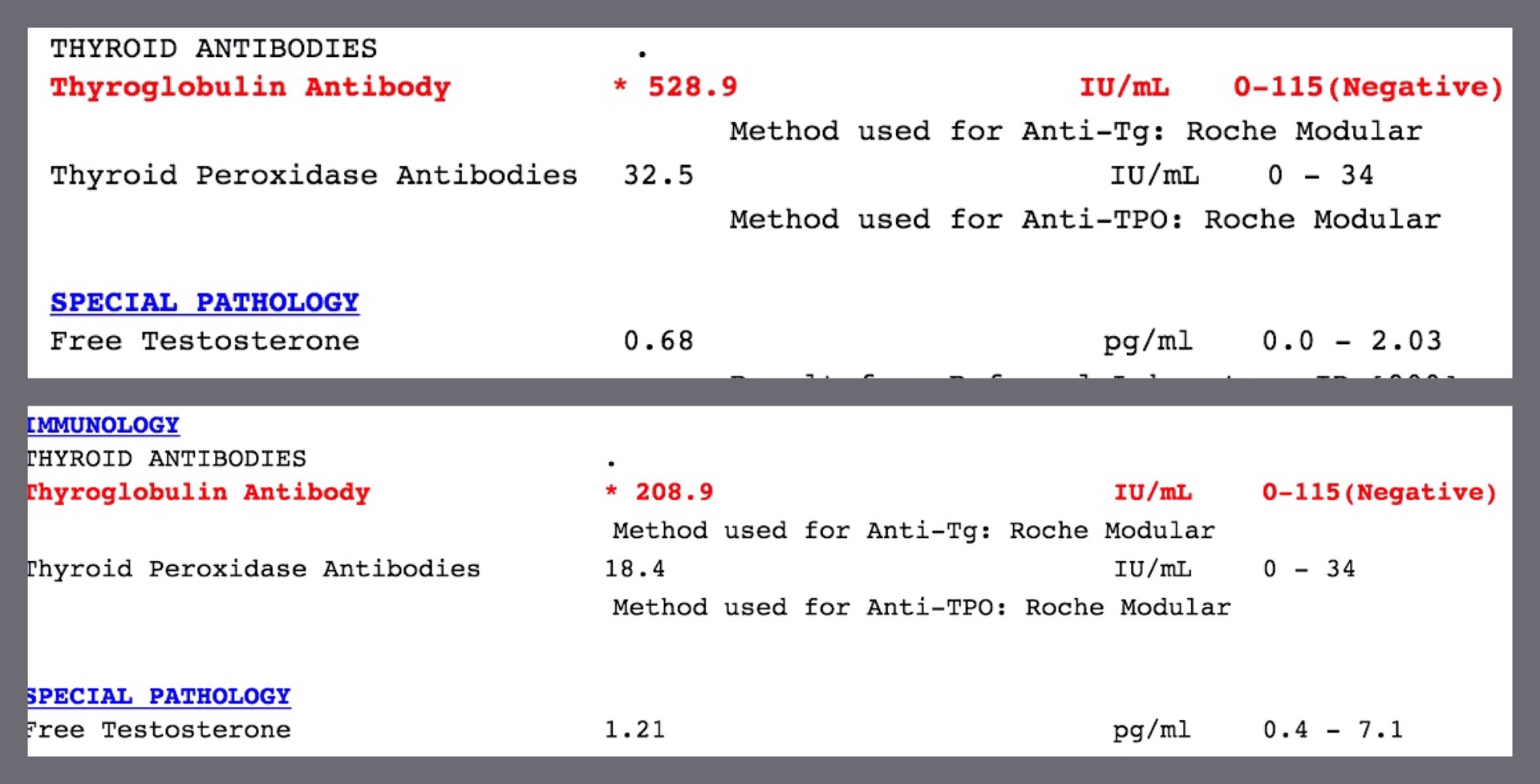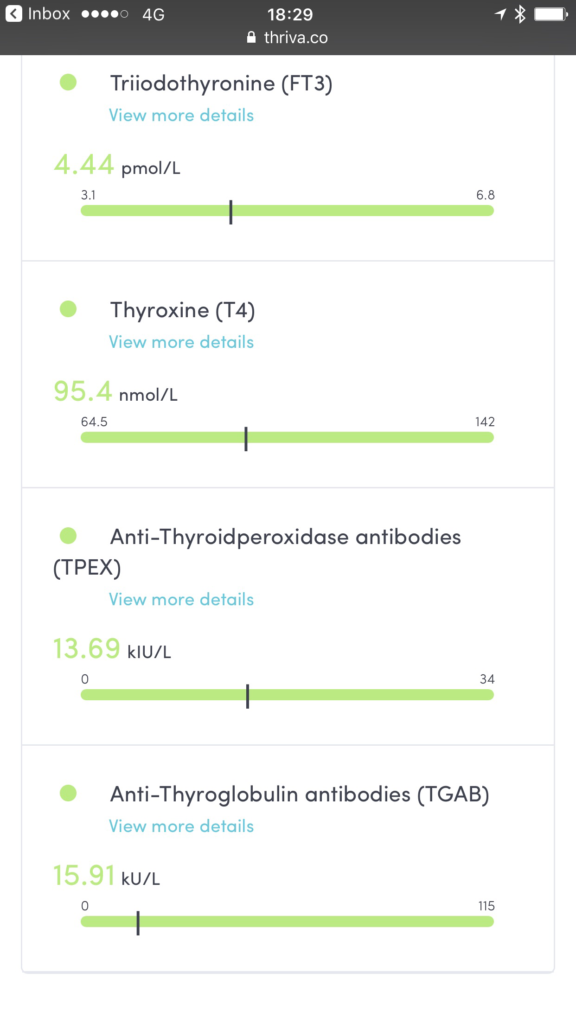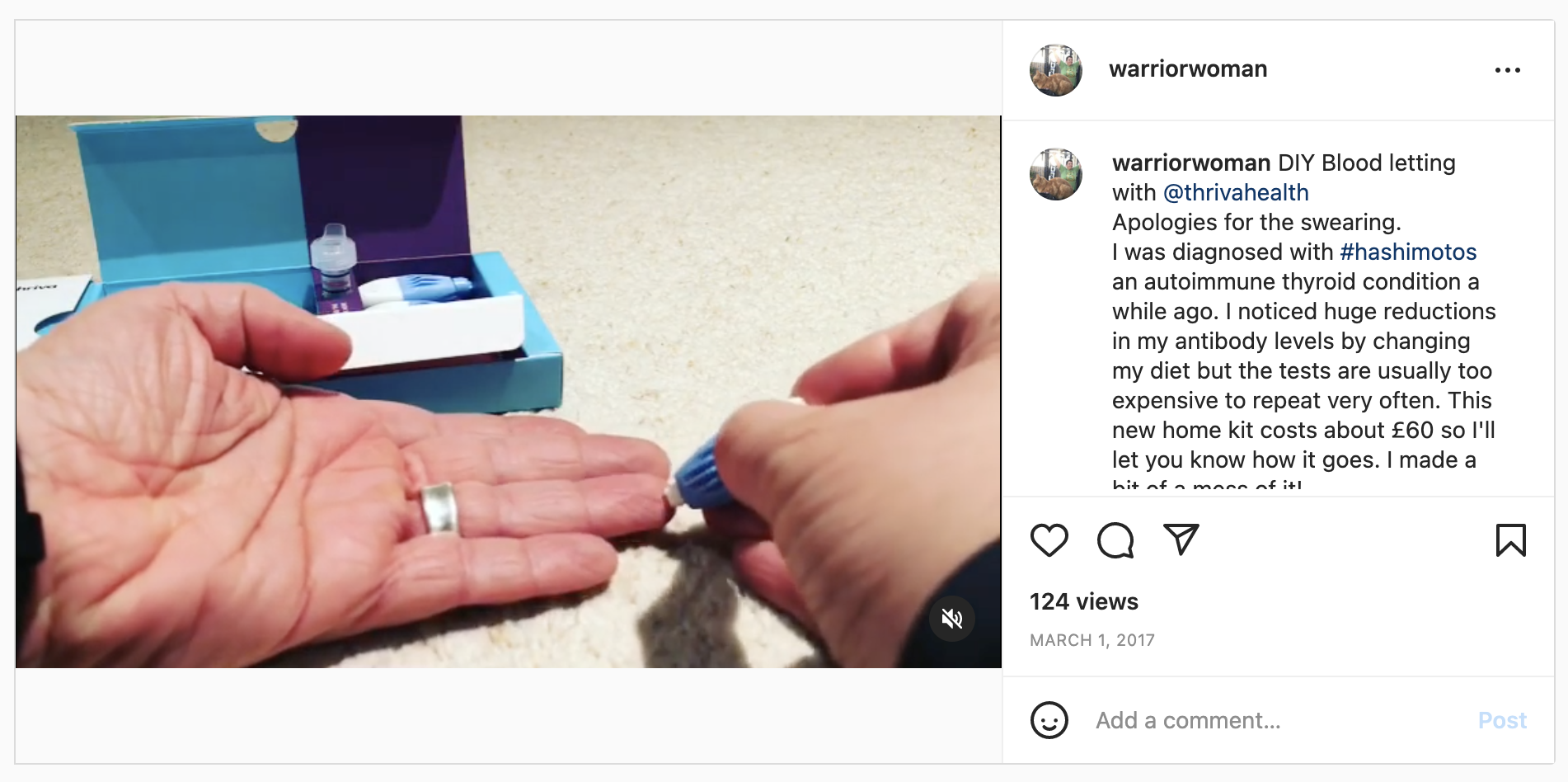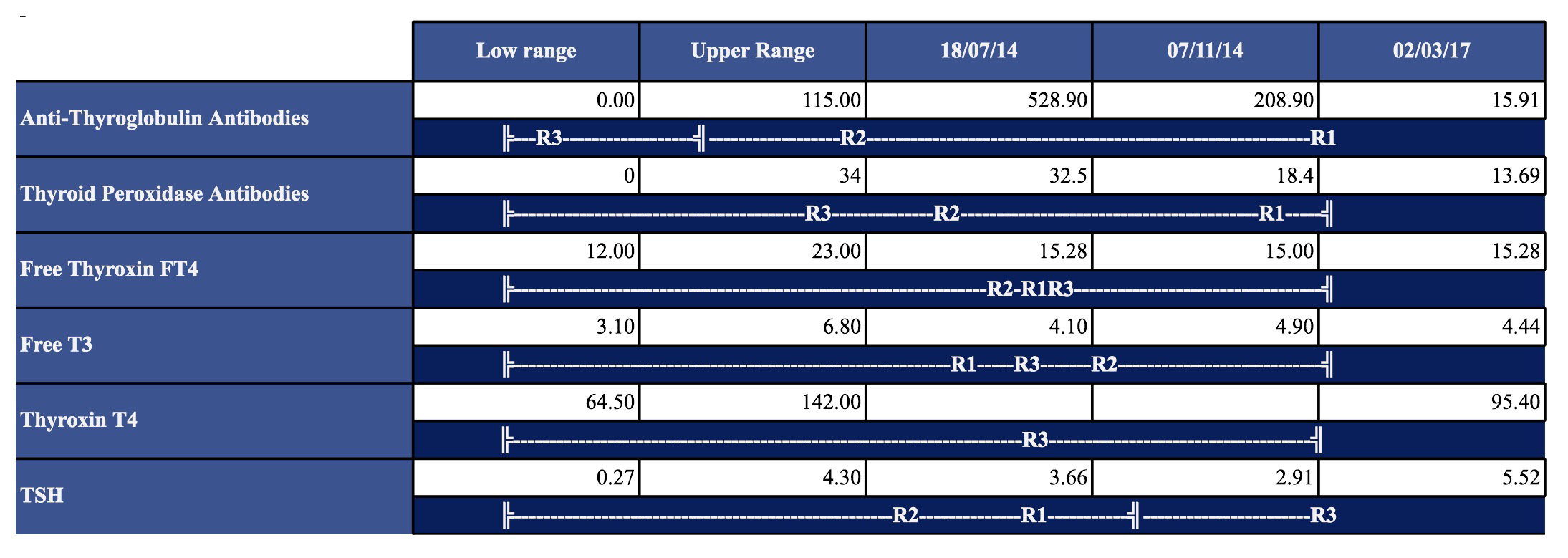Thriva Home blood testing and Hashimotos
Back in 2014 I posted about my newly discovered autoimmune disease, Hashimoto’s Thyroiditis. I’d acquired the diagnosis rather opportunistically while I was taking up an offer of a performance blood scan and I responded with suitable outrage and a desire to make lifestyle changes that might put my body back on an even keel.
Automimmunity feels to be the scourge of the modern age and I’ve become an ardent advocate of the role of diet in the control of inflammation. The kitchen is full to overflowing with assorted microbial foodstuffs and we cycle our way through recipes in books like the The Paleo Approach and the Weston A Price bible.
I came away with my new diagnosis and then immediately started my first round of the Whole 30. This is a rather strict, paleo style elimination diet. No alcohol, no dairy, no sugar, no grains. It’s tough but I have never felt so fantastic. Full of energy, drive and awareness. Apart from maybe the first week when I felt flat, grumpy and lethargic.
Having completed the 30 day program, feeling totally amazing, you’d think I would just continue on to the Whole Forever. I didn’t of course. Instead I fell right back off the wagon and added almost everything back into my diet.
Fortunately some habits did stick. I rarely have milk in my drinks now and I am approximately 80% gluten-free. Cakes, bread and pastries are a very rare component of my diet, having been replaced by home-made fermented foods such as kefir, kombucha, sauerkraut and kimchi.
I went back for another blood test shortly after finishing the Whole 30 and there were some very satisfactory improvements noted in the blood markers. My antibody levels had dropped by half and @sportiedoc was quite impressed. The top box shows my initial results with the thyroglobulin antibody levels showing values well above the normal range. It’s this marker that indicated Hashimoto’s Thyroiditis. The lower box is from the test about 3 months later and although it is still abnormal the antibody levels have dropped to 209 from 529.

It had been my attention to keep a regular eye on my blood results. I wanted to see quite how relaxed I could let my diet go while still keeping the antibodies in check but private blood tests are pretty pricey and 3 years passed before I knew it.
This is where Thriva makes its entrance. I noticed an ad in Outdoor Fitness mag for a home blood testing service and was amazed that they have an advanced thyroid scan available via the DIY kit for £69. You can of course get blood tests for free via your GP but getting them to do the right ones is challenging. I’m a bit of a cynic and think that our health service would be better called an illness service, my experience is that my GP is only interested in basic thyroid function tests that will alert us to catastrophic failure of the thyroid, that can then be treated with external hormone replacement. They are less interested in indicators of future problems, knowledge of which may empower us to make healthier choices.
Rant over. Hopefully it explains why I pay for my own blood tests. If you follow this Thriva home blood test link you will get £10 off as well.
The kit arrived promptly and when I plucked up courage I had a go at filling the vial. It requires quite a lot of blood from a finger prick and I made a bit of a mess of the job. It’s not really a hard task but it was challenging to take the video and collect the blood. Try not to let this video put you off (and listen on mute if you are sensitive to cursing!).
 I dropped the vial in the post box and 2 days later the results were emailed back to me.
I dropped the vial in the post box and 2 days later the results were emailed back to me.
And what fantastic results they were. Antibody levels are right back to normal. In fact if this was my first test I would no longer get the Hashimotos diagnosis.
Obviously I am really happy about that. It’s great news but what can you learn from my experience?
You can be absolutely sure that the last 3 years have not been run as a perfectly controlled experiment. I have been chopping and changing my diet and exercise routines, left right and centre. I’m a starter-leaver by nature and rarely follow any protocol fully or for the prescribed length of time. The most significant actions I’ve taken are as follows, any of which may have affected my immune response:
- reduced gluten consumption
- increased fermented food products
- low processed food intake
- no alcohol for the last 3 months (and counting)
- heavy weight training
- reduced cardio
- cold water swimming and cold showers
- Wim Hof breathing
It’s all been a bit ad hoc and not terribly consistent but the message I am left with is that you can influence your body’s response by your actions. Maybe you just need to do your own experimentation, perhaps you could pick one from the list and see how it goes. Now that home blood testing is a reality you can monitor the impacts on a regular basis.
Here’s a final chart showing the 3 readings (R1 = first reading, R3 = latest reading) for each blood test.


